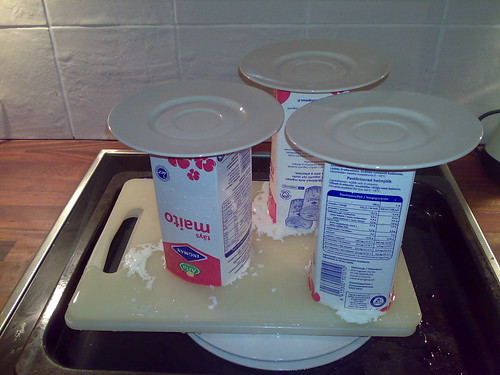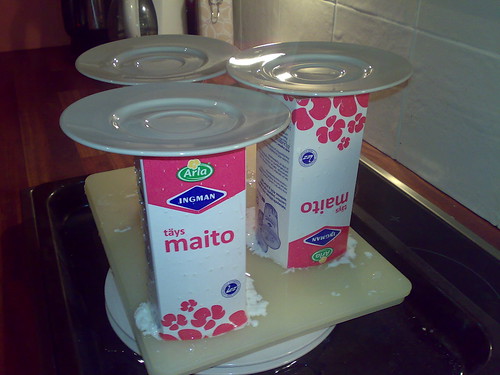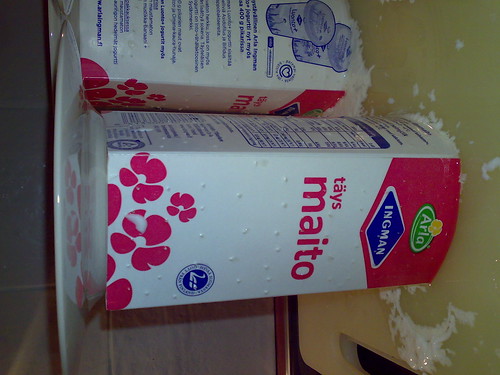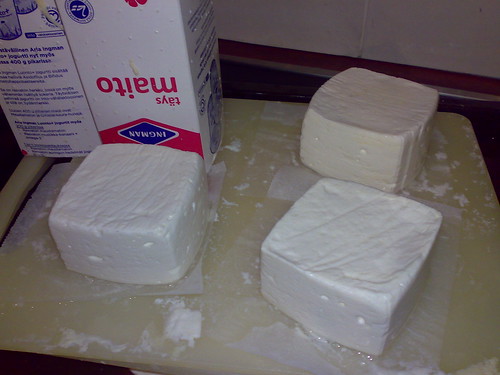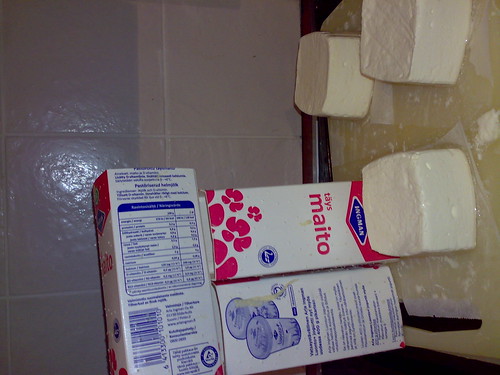So I made this yesterday. I used the following recipe:
Warmed 3 liters of 3,5% fat pasteurized milk to 32C
Added cultured buttermilk and a piece of store brought brie rind
Waited 30mins (removed the piece of brie rind)
Added rennet (0,5 teaspoon)
Waited 115 minutes
Moved curds to hoops with spoon
Let drain 26 hours at room temperature, turning 3 times
Salted quite lightly with salt shaker
Placed in fridge (8C)
I didn't try to maintain the temperature after the initial heating, so there was a slow temperature drop during coagulation. But my room temperature is almost 25C so it doesn't cool the milk very quickly. I believe my end temperature when filling the hoops was still around 30C.
The hoops: milk is sold in cartons of 1 liter over here. So I just cut of the top and bottom, pierced the remaining tubes all around with a sterilised piercer, dipped in boiling water to sterilise and filled them (I threw them away after use, so I'm gonna have to make new ones next time, but it was 10mins of work so that's okay).
Notes: it seems that one carton full of milk is just enough to fill a hoop made of one carton. Nice.
Also nice: the cartons work in a way that make the cheese a bit stuck on the place where it is. Result: when you turn, as long as the curds are a relatively uniform mass, it will glide nicely and not drop like a stone. So it won't break when turning. It glides beautifully, as one piece, keeping itself horizontal all the time. You don't even have to lift the bottom surface when turning, since you can just lightly squeeze the outside of the hoop (the place where the cheese is) and the cheese will be stuck on the sides. Of course none of this works for the first few hours of draining.
Another important note: the hoops are very light and they don't create enough pressure to hold the hoops on the surface at the beginning. So to avoid the hoops lifting up and letting the curds escape, it is necessary to lightly hold the hoop down by hand, while filling it. Hence the plates also - after filling, I put the plate on the hoop to keep it touching the surface (so I don't need to hold it down for the whole 26 hours

. Note: The plate does not touch the curds, so it's not pressing.
I feel quite good about this recipe. Hope that the P.Candidum was transferred properly by my soaking technique. That's the thing I'm most uncertain about, but if it's anything like the blues, I'm sure it stuck. (for blues, I'm using the same technique and a much smaller piece for a larger batch).
